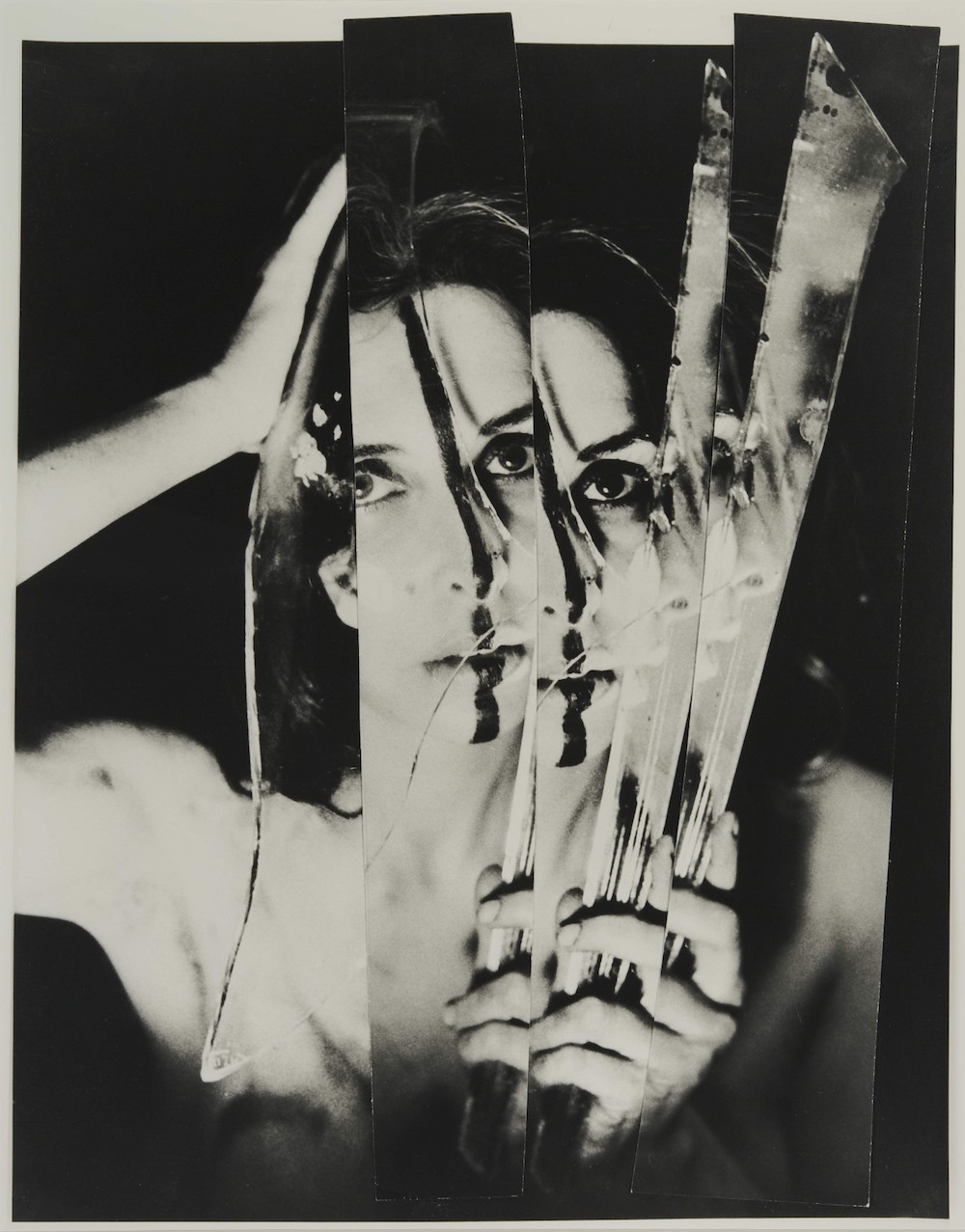Eye Body: 36 Transformative Actions for Camera, 1963. Photograph by Erró. Courtesy of the Carolee Schneemann Foundation and Galerie Lelong & Co., Hales Gallery, and P.P.O.W, New York © Carolee Schneemann Foundation / ARS, New York and DACS, London 2022.
Photograph: Erró © ADAGP, Paris and DACS, London 2022. Exhibition at Barbican Art Gallery, London, until 8th Jan 2023.
Carolee Schneemann (1939-2019)
American Photographer
Carolee Schneemann (1939 – 2019) was an experimental visual artist known for her works on the body, sexuality and gender. Native to the U.S., she frequently visited Philadelphia Museum of Art as a young adult and drew precocious connections between art and sexuality. She developed a reputation for naturalness and freeness with her body, and enjoyed a close relationship with nature.
Carolee received a BA in Poetry and Philosophy from Bard College, New York, becoming the first woman from her family to attend college; an MFA from the University of Illinois later followed. While at Bard, she posed as a nude model for her then-boyfriend’s portraits, as well as painting nude self-portraits. Through this experience, she began to realise differences between how men and women perceived each other’s bodies.
Despite being a renowned performance artist, Carolee began her career as a painter in the late 1950s, stating, “I’m a painter. I’m still a painter and I will die a painter. Everything that I have developed has to do with extending visual principles off the canvas.” Her painting was influenced by Neo-Dada art.
Carolee was aware of the misogynistic atmosphere in the art community at that time, and the lack of awareness among women artists regarding their own bodies. She is considered a ‘first-generation feminist artist’, a group that also includes artists such as Mary Beth Edelson, Rachel Rosenthal, and Judy Chicago.
Influenced by figures including Simone de Beauvoir, Antonin Artaud, and Allan Kaprow, Carolee gradually moved away from painting and deepened her involvement in performance art. Her first perfomance art, or “happenings” as they were known, was A Journey through a Disrupted Landscape (early 1960s). In this work, she invited people to “crawl, climb, negotiate rocks, climb, walk, go through mud”. Later works include Store Days (1962) and Site (1964).
During this time, Carolee also started representing her nude body in her art, with the intention of reclaiming control. Eye Body (1963) comprises a frontal nude of Carolee, with two snakes crawling out of her torso. The image attracted attention for its “archaic eroticism” and her visible clitoris. Some art critics labelled the presentation lewd and pornographic.
Throughout the 1970s, Carolee presented several other performance pieces that explored themes including sensuality, sex, the body, and gender politics. Other works included Terminal Velocity (2001) and Devour (2007).
An ardent cat-lover, Carolee’s cat Kitch featured in works such as Fuses (1967) and Kitch’s Last Meal (1978), and was a major figure in her work for almost twenty years. One of her later cats, Vesper, was part of Infinity Kisses (1986), which was a series of 140 photos, documenting the daily kisses Carolee gave Vesper. With several of her works featuring her feline companions, scholars regard Carolee’s work as significant for new discourses on human-animal relations.
Carolee died on 6 March 2019 after battling breast cancer for two decades. She was 79.
By Shyama Laxman












